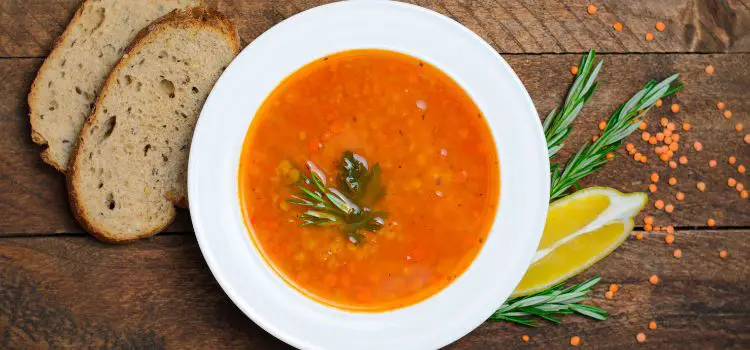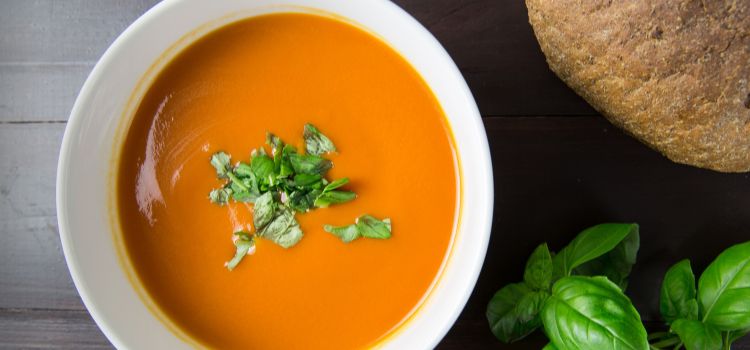As an Amazon Associate, I earn from qualifying purchases

In today’s fast-paced world, finding efficient ways to store food is more important than ever. Vacuum sealing has emerged as a popular method for preserving a variety of foods, including soups. The benefits of vacuum sealing soup are numerous. Not only does it extend the shelf life and preserve the flavors of your homemade or store-bought soups, but it also saves valuable freezer space by allowing for a more organized storage solution.
This method is particularly beneficial for those who enjoy meal prepping, as it enables you to prepare large batches of soup and store them for future use. In this article, we’ll delve into the equipment you’ll need for vacuum sealing soup, provide a detailed step-by-step guide on how to do it effectively, share tips for achieving the best results, and point out common mistakes to avoid. By the end, you’ll be ready to enhance your food storage strategy, ensuring your soups stay fresh and delicious.
Necessary Equipment to Vacuum Seal Soup
Before you begin vacuum sealing soup, it’s essential to gather the right tools. Here’s what you’ll need:
- Vacuum Sealer: While there are various models available, chamber vacuum sealers are ideal for liquids like soup. These machines are designed to handle wet foods without risking damage to the unit. However, if you only have access to an external vacuum sealer, it is still possible to seal soups by pre-freezing them first.
- Vacuum Seal Bags: Choose high-quality bags that are compatible with your vacuum sealer. Look for bags specifically designed for liquids, as these often have reinforced seams to prevent leaks.
- Bag Stands or Clips (Optional): These can help hold the bags upright while filling, reducing the risk of spills.
Understanding the differences between chamber and external vacuum sealers is crucial in selecting the right equipment for your needs. Chamber vacuum sealers create a vacuum inside the entire chamber, making them more effective for sealing liquids directly. External sealers, on the other hand, remove air from the bag only, which is why pre-freezing is recommended to prevent liquids from being sucked out during the sealing process.
Step-by-Step Instructions for Vacuum Sealing Soup
Vacuum sealing soup involves some preparation to ensure a successful seal. Follow these steps for best results:
- Cool the Soup: Before vacuum sealing, allow your soup to cool completely. This prevents steam from creating condensation inside the bag, which can interfere with the sealing process.
- Portion the Soup: Divide the soup into individual or family-sized portions. This not only makes sealing easier but also simplifies reheating, as you can thaw only what you need.
- Pre-Freeze (For External Sealers): If using an external vacuum sealer, pour the soup into bags and place them upright in the freezer until the soup is solid. This step is crucial to prevent the liquid from being sucked out during vacuuming.
- Prepare the Vacuum Sealer: Set up your vacuum sealer according to the manufacturer’s instructions. Ensure it’s clean and ready for use.
- Fill the Bags: For chamber sealers, you can fill the bags directly with cooled soup. For external sealers, use pre-frozen bags. Leave about two inches of space at the top to ensure a proper seal.
- Seal the Bags: Place the open end of the bag into the sealer. For chamber models, position the entire bag inside the chamber and close the lid. Start the sealing process, ensuring that all air is extracted before sealing.
- Inspect the Seal: Once sealed, check the bags for leaks or incomplete seals. A properly sealed bag should be airtight, with no air bubbles or pockets.
Following these steps will help ensure your soup is sealed correctly, preserving its flavor and quality for future enjoyment.
Tips for Best Results

To enhance your vacuum sealing experience, consider the following tips:
- Choose the Right Bags: Opt for high-quality, durable bags with reinforced seams to prevent leaks. Bags specifically designed for liquids are a good investment if you plan to seal soups frequently.
- Enhance Flavor: Consider adding herbs or spices before sealing. Vacuum sealing can intensify flavors over time, making your soup even tastier when reheated.
- Label and Organize: Clearly label each bag with the type of soup and the date it was sealed. Store bags flat in the freezer for efficient use of space and easy access.
- Use Bag Stands or Clips: When filling bags with liquid, using stands or clips can help prevent spills and make the process more manageable.
Implementing these tips will help you achieve the best results when vacuum sealing soup, ensuring your meals are both delicious and convenient.
Common Mistakes to Avoid
Avoiding common mistakes can significantly improve your vacuum sealing success:
- Overfilling Bags: Filling bags too full can lead to leaks and poor seals. Always leave enough space for the seal to form properly.
- Skipping the Cooling Step: Sealing hot soup can cause condensation inside the bag, compromising the seal and potentially leading to spoilage.
- Inadequate Pre-Freezing: If using an external sealer, failing to pre-freeze can result in liquid being sucked into the sealer, causing a messy cleanup and potential damage.
By steering clear of these pitfalls, you can ensure your vacuum sealing efforts are both effective and efficient.
Conclusion
Vacuum sealing soup is a practical technique that offers numerous benefits, from extended shelf life to enhanced flavor preservation. With the right equipment and a bit of preparation, you can easily incorporate this method into your meal planning routine. By following the outlined steps and tips, you’ll be able to store soups efficiently, maximizing both space and flavor retention. We encourage you to try vacuum sealing soup at home and experience the convenience it brings to your culinary endeavors.
Whether you’re an avid meal prepper or simply looking for a better way to store leftovers, vacuum sealing is an excellent solution. Share your successes and tips with others to build a community of shared knowledge and innovation in food preservation.
FAQ
Can you put soup in a vacuum sealed bag?
Yes, you can put soup in a vacuum sealed bag. It’s best to pre-freeze the soup first if using an external vacuum sealer to prevent liquid from being drawn out. Use a high-quality vacuum seal bag, ensuring the soup is cooled and leaving space for a secure seal.
How long will vacuum sealed soup last?
Vacuum sealed soup typically lasts 2 to 3 years in the freezer without losing quality, compared to a few months for non-vacuum sealed soup. This extended shelf life is due to the reduction of air exposure, which helps prevent freezer burn and maintain flavor and nutrients.
Can you vacuum seal soup in a jar?
Yes, you can vacuum seal soup in a jar using a jar attachment for your vacuum sealer. Ensure the soup is completely cooled before sealing. This method is great for short-term storage in the refrigerator, as it keeps the soup fresh and flavorful longer compared to traditional methods.
As an Amazon Associate, I earn from qualifying purchases